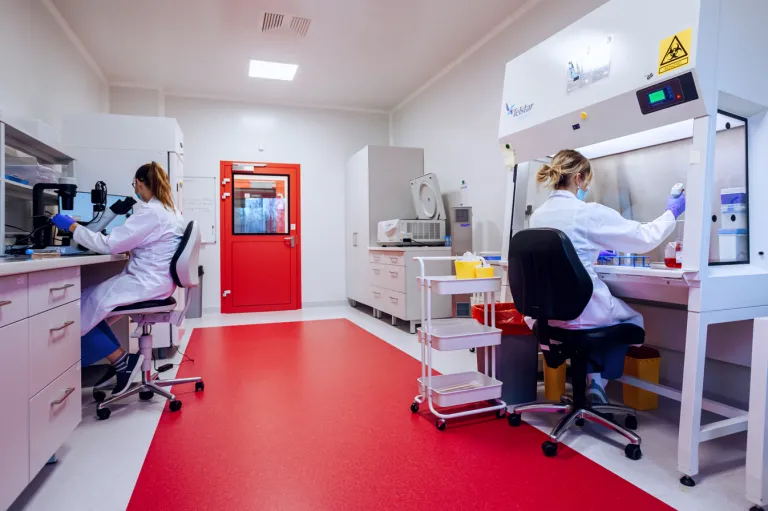Amniocentesis is a test classified as an invasive prenatal test. Nevertheless, the risk of complications is currently defined as 0.1%. Amniocentesis provides a wealth of information regarding, among other things. The baby's karyotype. If abnormalities are detected, it is therefore possible to implement appropriate management while still pregnant. How does amniocentesis proceed and what are its possible complications?
What is an amniocentesis?
Amniocentesis is classified as an invasive prenatal test. It is performed after 15. One week of pregnancy. It involves puncturing the uterine cavity and collecting amniotic fluid, which is then examined to determine, among other things. karyotype of the child and exclude or confirm possible chromosomal aberrations. This test also allows you to determine with 100% certainty the sex of the child, and also allows you to perform a paternity test. Besides, the collected amniotic fluid can also be used in the diagnosis of certain inborn metabolic diseases, such as cystic fibrosis, as well as neural tube defects. In addition, amniocentesis can be performed to diagnose a possible infection, such as toxoplasmosis or cytomegalovirus.
Amniocentesis-how does it go?
Amniocentesis is usually performed in a hospital setting by an experienced gynecologist. The examination takes place under ultrasound guidance so that the specialist can control exactly where the needle is located. The test itself takes about 5-10 minutes. First the doctor disinfects the field, then a special needle is pierced into the uterine cavity and a sample of amniotic fluid of about 20 ml is taken. It then goes to the laboratory, where it undergoes various types of testing. The pain from the puncture is described by women as worse than drawing blood from a vein, but it is bearable and rarely requires local anesthesia. After the amniocentesis, most often, if there are no other indications, the woman can leave the hospital. It is important to avoid lifting heavy objects for about 14 days, and to take it easy, and to go to the emergency room of the maternity hospital if there are any worrisome symptoms.
Amniocentesis- indications
Since amniocentesis is one of the invasive prenatal tests, indications for its performance must be present. One of them is the high risk (greater than 1:300) of chromosomal aberrations (e.g. Down syndrome) during the double test performed in the first trimester, and visible defects in the baby on ultrasound. In addition, among the indications for amniocentesis are:
- The birth of a child with chromosomal abnormalities (such as Down syndrome),
- Birth of a child with a defect in the neural tube or central nervous system,
- Giving birth to a child with a metabolic disease.
Amniocentesis- possible complications
It should be borne in mind that the benefits of performing amniocentesis significantly outweigh the risks of this test. Currently, it is determined at 0.1% of all amniocentesis performed. Possible complications include miscarriage, genital spotting, leakage of amniotic fluid, intrauterine infection, and injury to the baby with the puncture needle. However, these are extremely rare situations.
Amniocentesis-result
The waiting time for an amniocentesis result depends on the tests performed and the method chosen. For example, on the outcome of the so-called “thesis”. Microarray waits only a few days. Likewise for the FISH method. Classic cell culture, on the other hand, can take up to four weeks.
Rate this article:











